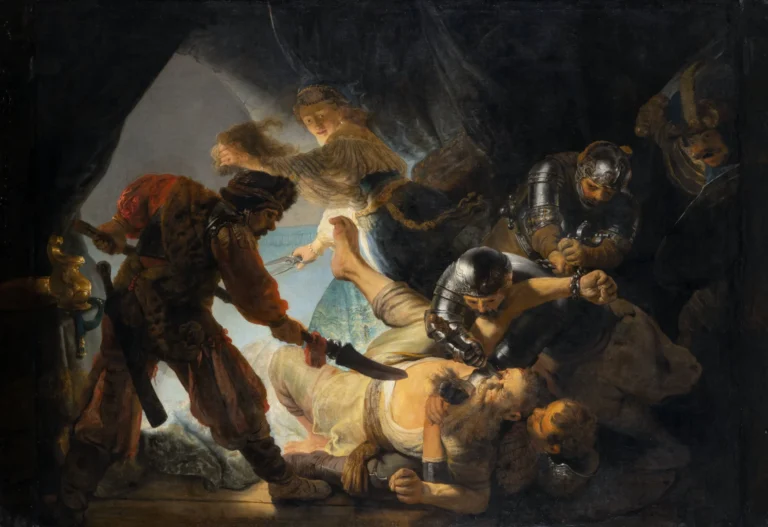The Blinding of Samson
Created in 1636, The Blinding of Samson is a monumental painting by Rembrandt that dramatizes the biblical tale from the Book of Judges, depicting the moment Samson is betrayed and blinded by his enemies. The masterful use of light and shadow encapsulates the brutality and desperation of the scene, showcasing Rembrandt's ability to elicit strong emotional responses through his art. This work reflects the turmoil of betrayal, as well as the power dynamics at play among the characters, particularly focusing on the tragic figure of Samson, captured in excruciating detail amidst his struggle for freedom.
Year 1636
About the Artwork
The painting illustrates a pivotal scene from the biblical narrative of Samson, whose immense strength derived from his uncut hair. Betrayed by Delilah, who succumbs to the Philistines' bribery, Samson is overpowered and blinded, symbolizing the frailty of human strength against deceit. Rembrandt captures this violence with chilling realism; the expressions of the Philistines convey both determination and fear, while Delilah's transition from lover to antagonist is poignant as she holds the scissors that sever Samson's strength. This artwork is not merely a representation of physical pain, but also an exploration of themes such as love, betrayal, and suffering that resonates across time.
Did You Know
Samson’s biblical story highlights themes of strength, betrayal, and redemption, showcasing his conflict with the Philistines and his fateful connection with Delilah—a tale that resonates deeply with ideas of vulnerability and human relationships.
Rembrandt’s signature technique of chiaroscuro not only enhances the visual drama of the painting but also serves to reflect the moral and emotional struggles of the characters, making the artwork an embodiment of Baroque artistic innovation.
The Blinding of Samson has influenced countless artists and remains a pivotal reference in discussions surrounding Baroque art, illustrating both the narrative depth and technical mastery that define Rembrandt’s legacy as a leading figure of Western art.










